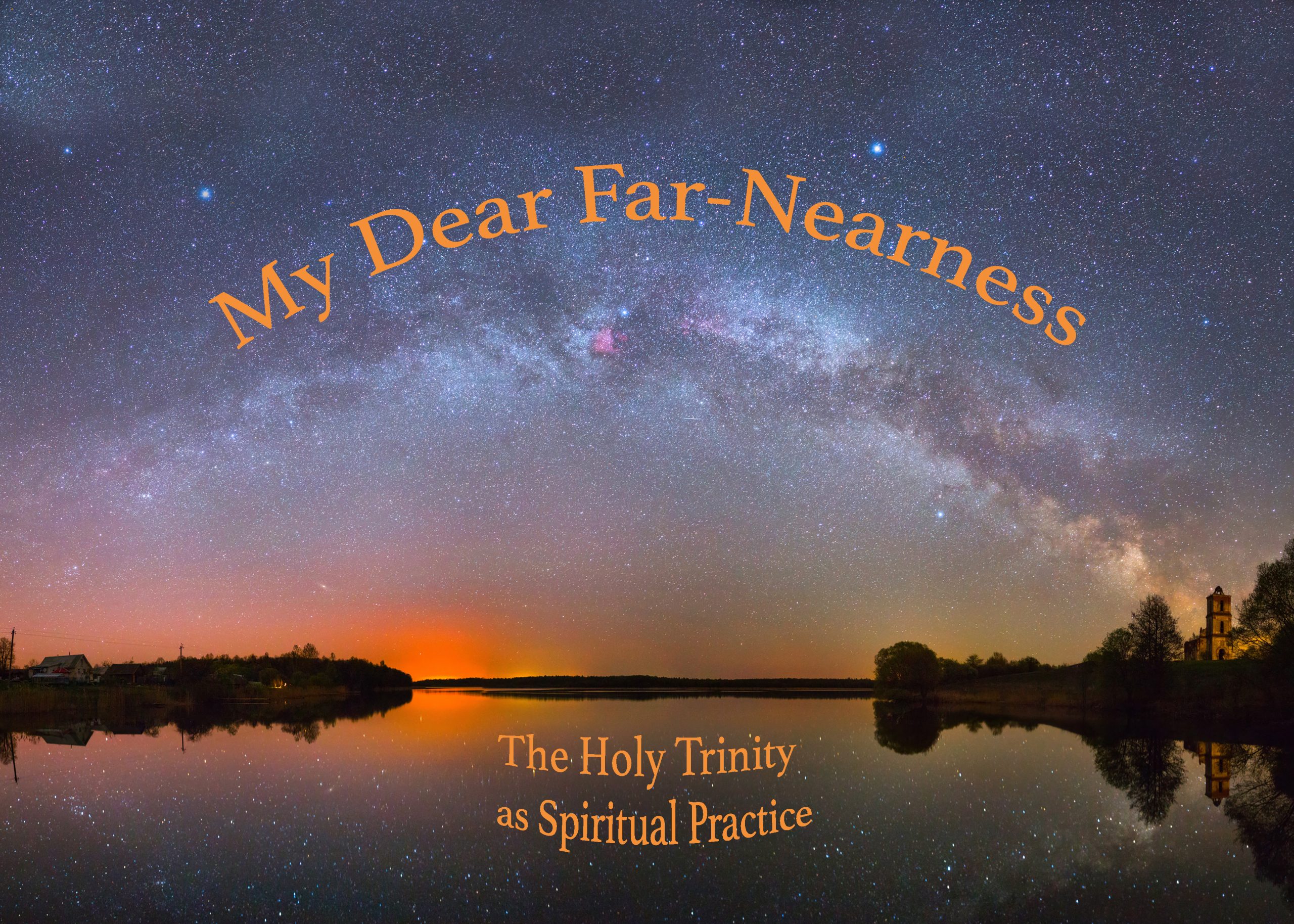
My Dear Far-Nearness by Robert A. Jonas
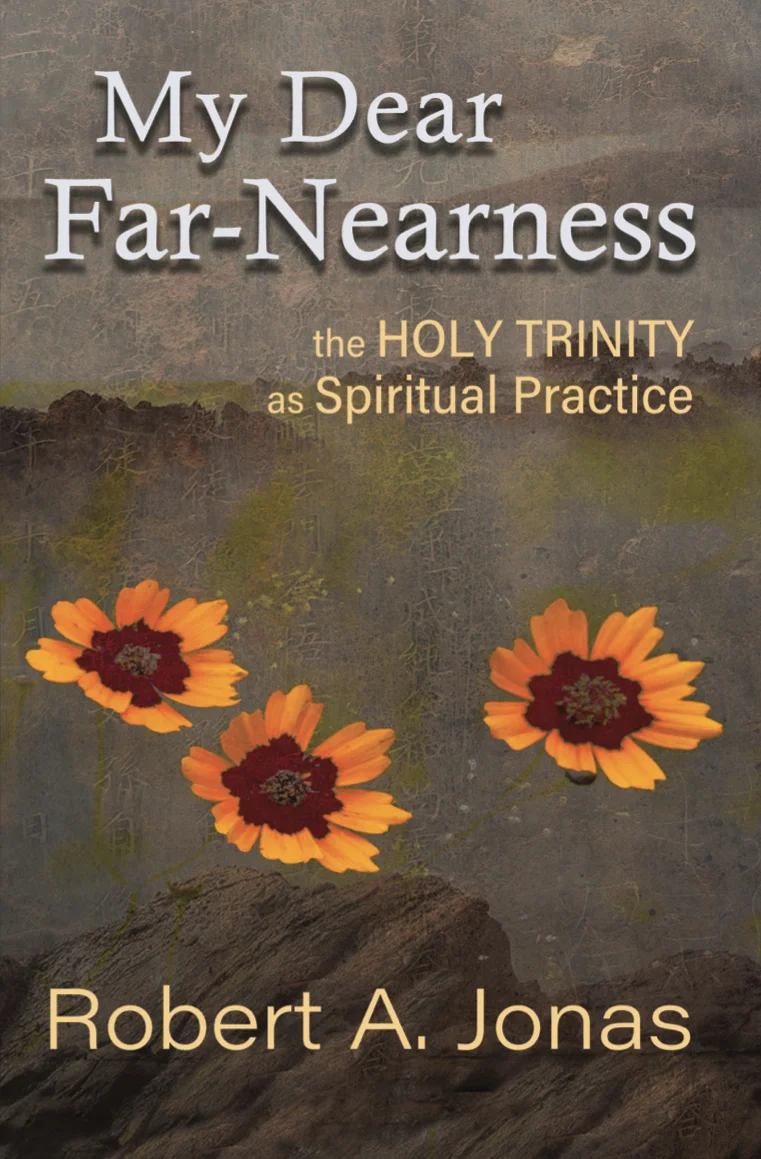
Order your copy now on Amazon (paperback or Kindle) or at Broadside Bookshop in Northampton, MA.
Write a Review
If you enjoyed My Dear Far-Nearness and would like to recommend it to others, please write a customer review.
These are some of the Christian Mystics who have inspired this book.
What People Are Saying…
I am doubly thrilled and inspired to read My Dear Far-Nearness. Jonas explores themes that are central to my heart, and so important for contemplative Christians who wonder how to access the Triune Mystery in their spiritual practices.
My Dear Near-Farness is a wide-ranging, warm work that fruitfully explores the nature of the Christian Trinity from a novel perspective: immanent as well as transcendent, in kataphatic and apophatic terms… Read more…
…my encounter with Robert A. Jonas’ book, My Dear Far-Nearness has brought me to think more deeply about the Trinity as his insights have creatively transformed my own. Read more…
This is a good book. Read it. Practice it. Learn its moves, beyond dogmatic formulas, and explore the transformative consciousness that upwells within each present moment. Read more…
This book is a precious gift to the contemplative community, especially Christians yearning for a more interior, immediate, and immanent connection with their own awareness, the sacred meeting place of Unity. Read more…
In bringing the three divine Persons of the Holy Trinity—Creator, Incarnate One, and Holy Spirit—right into the eternal present moment of our daily lives, Jonas artfully shows us how we can awaken to the Holy Trinity within ourselves and experience extraordinary holiness in the midst of the ordinary. Read more…
Robert Jonas’s fresh, provocative take on the Holy Trinity is an eye-opener—certainly for Christians but also for non-Christians, most of whom view the Trinitarian doctrine as an article of faith rarely contemplated by the faithful themselves… Read more…
My Dear Far-Nearness is a one-of-a-kind book from a one-of-a-kind author. It distills a lifetime of spiritual practice and analytical reflection. Read more…
Introduction to My Dear Far-Nearness, the book
My Dear Far-Nearness is a name for God used by the 14th century mystic, Marguerite Porete (d. 1310). Many of us know about the German mystic, Meister Eckhart, but do not know that Porete inspired and informed Eckhart’s brilliant works.
My Dear Far-Nearness is a ground-breaking exploration of the Holy Trinity–not as dogma, doctrine, or belief, but rather as three aspects of spiritual awareness: three dimensions of our transformed everyday consciousness. We begin this unusual exploration with a bow to ancient and modern wisdom, echoing the theories of perception outlined by Aristotle and Thomas Aquinas, and later explored in psychology by Sigmund Freud, Carl Jung, Carl Rogers, and Abraham Maslow, all affirming in different words that what and who we see is what and who we are. We take note of early Christians such as Origen (185–254 CE) who reflected deeply on Christian oneness. He wrote, “He [God] who is known is mingled in a certain way with him who knows.” Later, in the 14th century the great medieval Dominican friar, Meister Eckhart said, “The eyes with which I see God are the eyes with which God sees me.” Today, in 21st century, we see parallel ideas from philosophers, artists and therapists such as Anais Nin who wrote that “We don’t see the world as it is. We see it as we are.” We also trust the insight of psychoanalyst Carl Jung who highlighted the usually hidden processes called introjection and projection, which reveal that whatever we see in those outside of us is also within us. We are each a microcosm of our families, our communities, and of the Divine.
Too often, we project onto others what qualities we reject in ourselves, or we admire in others what we can’t accept in ourselves. Each day we give ourselves away to others, becoming more and more constrained, inflated, afraid, proud, self-reproaching, and self-centered—living what the Trappist monk and author, Thomas Merton, called the “false self.” Even as we revere Jesus and try to follow his example of love, mercy and forgiveness, we have not yet realized that in his Incarnation, he was manifesting a way of being that each one of us shares. This is the Christian journey of metanoia (Greek: a transformational change of mind and heart) that mirrors the journey of Jesus. But Jesus didn’t own this way of being. He gave it away to everyone. As the Roman Catholic priest and writer, Fr. Henri Nouwen, often said, “What is said of Jesus is said of you.” However, this mirroring dance between divine and human isn’t easy. It requires deliberate and devoted spiritual practices that can be over-shadowed by the ego’s desire to maintain control of our lives. It’s a Work that requires us to face our aloneness–and sometimes a confrontation with the abyss within– in solitude. Receiving the gift of incarnation does not mean that we do everything that Jesus of Nazareth did, thought, or felt, but rather, that we live out his practices of loving, empathizing, contemplating, praying, and justice-making. As we become transformed on this path our ego-self becomes transparent to the divine, and now we live in that liminal state of consciousness that is both human and holy–each in our own way, with the gifts that we’ve been given from our human family and ancestors, and from the Divine.
The three dynamic portals of awareness in the Christian Trinity can be accessed by anyone, including those in non-Christian traditions such as Buddhism, Taoism, Sufism, and Judaism, because they are human and universal experiences. Other traditions will name these experiential modes of spiritual awareness differently, and each tradition will bear the fragrance of its own cultural and religious ambience. Many Christians grew up with the belief that the Holy Trinity is a separate, holy and objective reality, something ultimate and perfect, somewhere in heaven. Our responsibility as Christians was to simply believe in the Trinity, and to worship with images and theological stories about the Trinity. But this notion, that the Trinity is separate from us, is a feeble and enervated understanding of the truth that Jesus embodied and lived. Jesus invited us into a complete change of identity, a wholistic metanoia that empowers us into a new way of living and serving (Eph. 4:24 and Col. 3:10)
Merton called our transformed self, the True Self. He knew that simply believing in the three “Persons” of the Trinity isn’t enough. We’re invited to wake up to the Three as dynamic, continuously circulating aspects of our awareness, and to experience our everyday lives from this holy Ground. When we live this way, it’s as if the Trinity within us is experiencing the universal, transcendent Holy Trinity.
The Christian call to metanoia brings transparency to all the boundaries that we keep–between divine and human, between past and present, and between self and other. When this potent transparency arrives we realize that the dynamic, living reality of others, the natural world, and God are simultaneously outside of us and within us. In fact, the divine cosmos is not only “out there,” but also within us. This experience is a kind of “oneness” with all things, but the Holy Trinity is a dance (Greek: “perichoresis,” περιχώρησις), and dancing requires partners, a kind of oneing-and-othering. In this way of living we appreciate the distinct and holy “otherness” of others and God while simultaneously finding ourselves in these others. This is a capacity that the French philosopher Henry Corbin, has called “alterity,” the ability to recognize that while we are not our neighbor or God, what we see in them is also in us. This experience has been explored by Max Picard, a German Jew/Catholic who lived in Germany in the 30’s and 40’s, as he pondered how the German people could tolerate the madman called Hitler. Picard’s powerful, startling book is called Hitler In Our Selves.
Some theologians say that the word “sin” describes the intellectual and emotional practice of separation from others, nature and God. The Jewish theologian Martin Buber contrasted two types of interpersonal awareness: the I-it and the I-thou. I-it separates us from the object of our awareness, while I-thou placed us in a more vulnerable position where we see ourselves as both like and unlike the other person. This is alterity, when we see others in ourselves and ourselves in others while simultaneously recognizing our differences. In the practice of alterity we do not separate ourselves from anything or anyone. When we seek to understand those who seem so different from us, Corbin suggested that we go exploring into ourselves and listening more deeply and sensitively into others, trusting that in this liminal exploration, both people benefit. If we are intentional, kind, and careful, we will find ourselves in the other. This is the communal relationality of trinitarian living: a dance of self-other-and us. We trust that Jesus Christ recognized the reality of differences in his world, but that he did not separate himself from God or anyone. We surmise and affirm that Jesus lived the awareness of the Creator, of the Christ, and of the Holy Spirit–a dynamic world of relationship that was within him and transcended him. St. Paul glimpsed this profound way of living and called it “the mind of Christ,” and he did not say that only Jesus had this mind. He said that we have this mind of Christ (1Cor. 2:16). Paul didn’t say to fellow Christians that we will have the mind of Christ. He said that we have this mind, but we know that we’re not mindful of it, and we’re not practicing it. How can we realize this blessed path of a deeply relational, trinitarian consciousness? This is the journey described in My Dear Far-Nearness–how to live the Holy Trinity.
The vision of God as a Holy Trinity appears only once in the Gospels (Matthew 28:19). God as Trinity was conceived in the 3rd to 7th centuries by spiritual leaders who struggled with questions about Jesus’ identity. Various Councils were called together to characterize how divine reality could be One (as in the Hebrew tradition), while also acknowledging the depth of holiness in Jesus Christ and the Holy Spirit. The Councils decided that ultimate reality–God–is simultaneously One and Three. This vision became doctrinally expressed in the Nicene Creed, which many Christians recite on Sunday mornings. The relationship between Father, Son (Jesus), and the Holy Spirit was described as a perichoresis (Greek: Dance-Around of Love). Each of the three dancers were described as “Persons” (Greek: hypostasis, the underlying subjective reality of a being). For centuries, theologians have argued finer points of this doctrine, often wondering, for example, which of the Persons is more important. Much of this debate imagines the three Persons in anthropomorphic ways, like a community in heaven. But in My Dear Far-Nearness, we take a different approach. We surmise that the doctrine of God as a perichoresis is within us as a trinitarian dance of our own awareness. We suggest that Jesus experienced and manifested each Person of the Holy Trinity, each one arising from the invisible, infinite ground of the Godhead. Each aspect of God being distinct from the others, but not separate. Each of the three “Persons” is a mode of divine subjective Presence, a presence which Jesus lived, and which he shared, and shares, with us. My Dear Far-Nearness explores the qualities of each Person, and how to practice and live them in our daily lives.
Dr. Jonas, with his background in both theology and psychology, shows that as we come to know each Person of the Trinity, we access a particular aspect of our own awareness, and come to know ourselves from within the mind of Christ. Gospel stories offer glimpses about Jesus’ sayings and behaviors, but more and more people wonder about Jesus’ awareness. What spiritual practices might help us to experience the same divinely attuned consciousness that Jesus likely experienced? Each day we are inundated with information about the terrible problems we face–environmentally, politically, culturally, racially, economically, medically, and technologically. From within this relatively new 2025 experience in America, where our democracy is being overshadowed by authoritarian rule, many of us feel that we stand at a precipice, and more information will not save us. We need transformation as much as information, a transformation of how we perceive ourselves, others, God, and nature. We need a revolution of our awareness, one that leads to radically inclusive and inter-connected sense of presence, kindness, empathy, love, and justice. My Dear Far-Nearness unpacks the Christian Holy Trinity as a transformational path that challenges us to discipline our conscious lives, and to align our awareness in the direction of sacred mystery, unknowing, interpersonal love and compassion, and justice–in the fullness of our lives, including the quiet of solitude, and in the dancing dynamics of relationships and community.
My Dear Far-Nearness will appeal to anyone drawn to mindfulness meditation and contemplation, especially to Christians (and former Christians) who have discovered the value of silence and Eastern spiritual paths such as Taoism, Hinduism, and Buddhism. The book borrows gratefully from theological, philosophical and psychological languages and insights, but it is also immensely practical, providing a wealth of practices to help us open our awareness to the reality we call “God,” who is always right where we are, and never somewhere else.
Dr. Jonas writes as a Christian who grew up Lutheran in Wisconsin, later converted to the Carmelite Order in the Roman Catholic tradition, and now teaches contemplative meditation and prayer as the host of Empty Bell sanctuary in Massachusetts. He was trained in the Blowing Zen tradition (shakuhachi flute), and has played shakuhachi at three of the Dalai Lama’s retreats. Living from within the Christian mystical tradition, Jonas’s spiritual commitment is to seek holiness and wisdom wherever he finds these qualities on the contemplative journey. He is drawn to the spiritual vision of Evelyn Underhill and Aldous Huxley in the inter-spiritual Perennial tradition, and serves on the Board of the Society for Buddhist-Christian Studies. Speaking as a husband, father, grandfather, psychotherapist, spiritual director, musician, environmentalist, and lay theologian who founded The Empty Bell, a sanctuary for contemplative practice, his recent book is the fruit of a lifetime of study, service, practice, and prayer. See his websites at emptybell.org and mydearfar-nearness.org
My Dear Far-Nearness has won an award from Illumination Book Awards, and has been warmly received by seminary professors, retreat leaders, and spiritual directors from a range of religious traditions.
To supplement the book, this website also introduces several Christian mystics whose experience of God gave them deep insights into the Persons of the Trinity. The teachings of these mystics have guided Dr. Jonas’ exploration of trinitarian consciousness. Each mystic was chosen because he or she manifested a direct experience of the Persons, and each one is shown to be particularly drawn to one of the Persons, even while experiencing each of the Persons as a microcosm of the others. What follows on this evolving website are glimpses of these mystics. They will be explored more extensively in a future book by Dr. Jonas.
Dr. Jonas continues to host Christian and interfaith gatherings at The Empty Bell. Since 1994, the Empty Bell has been an in-person and virtual center for contemplative practice and learning that is based in Massachusetts. We offer the intimacy, candor, and safety of a small group setting as participants share their spiritual paths.
The Holy Trinity
Spiritual Practices

The Holy Trinity is not merely an abstract doctrine. It’s not even a belief. Rather, it is a living experience that we can learn to practice in solitude, relationships, and community. My Dear Far-Nearness explores the three “Persons” of the Christian Trinity as a mirror that reflects the three corresponding aspects of our awareness. We learn that what we see is a mirror into what we are; how we perceive others and God is directly related to the dynamism of our everyday awareness, our consciousness and our unconsciousness. Like the First Person (the Creator) we can know ourselves, God, and others as mystery because Creator is Mystery. In this First Person awareness we are continually walking into the land of unknowing. Like the Second Person we can know ourselves, God and others in the interpersonal dimension of I-thou awareness practiced by Jesus of Nazareth two-thousand years ago. This aspect of awareness carries an ambience of care, empathy, and love. And like the Third Person, we can know ourselves, God, and others from within the “we” Spirit of interbeing in community: “wego” instead of ego.
My Dear Far-Nearness presents a wealth of spiritual practices that help us attune our awareness to the Divine Mystery and to grow in wisdom and love with others. The doctrine of the Holy Trinity assumes that the Persons circulate in each person’s consciousness and that each Person of the Trinity circulates in the other two. Each Person, and each dimension of our awareness is a fractal of the others. But generally, we won’t experience this unless we take up certain spiritual practices. Diligent, purposeful practices awaken us to each dimension of awareness. As we mature in these practices, they will begin to happen on their own. Sometimes we will dwell in mystery and unknowing; sometimes in the vibrancy of I-thou relationships; and sometimes in the “we-ness” of community participation. Each aspect of our awareness can be experienced as a divine presencing, and the three can be lived. Here is a sampling of practices for each Person.
Practicing the First Person
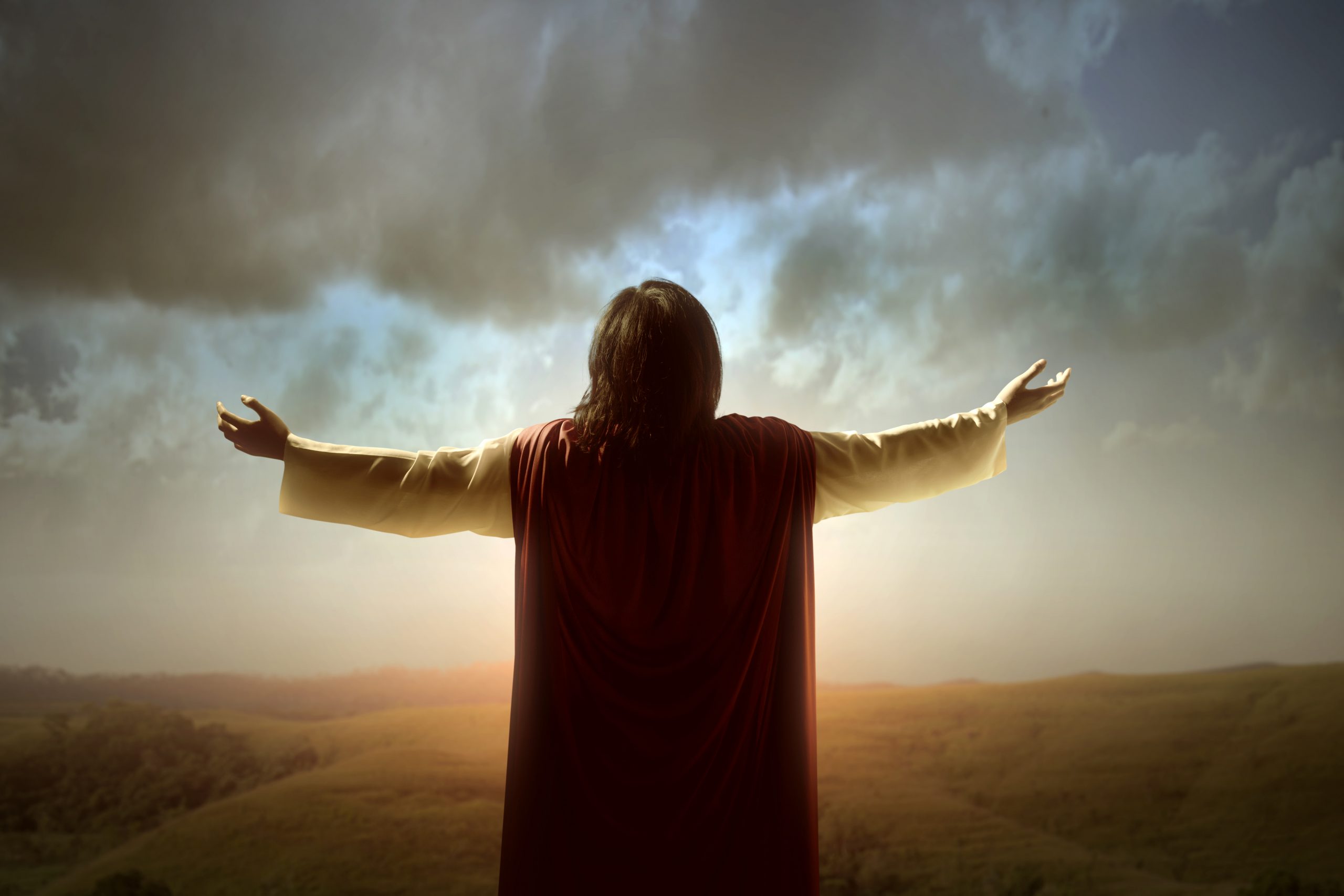
Practicing the First Person in solitude
The First Person of the Holy Trinity is Creator, the ultimate, and boundary less Source of the entire cosmos. The great medieval mystic, Meister Eckhart used the name Godhead (Gottheit) for this Mystery that births God (Gott). This holy Godhead can’t be grasped and known by our senses, intellect, or ideas. The First Person is ultimately unknowable. Therefore, we can’t even say that we “understand” Creator. We can only experience this Mystery. This is difficult because here in 21st century America, we have learned to live from within what Alan Watts has called “the skin-encapsulated ego.” Over the course of our life-time, we have each constructed a self that navigates the world of work, family and community. This self likes to see everything through its own windows of knowing, options, and judgements. But the hard boundaries we create between ourselves and others separate us from others, from nature and God.
Creator (First Person) is ultimate Mystery, and if we are to appreciate and experience Mystery, we must “be” mystery ourselves. As the great Catholic priest and theologian often said, “Our whole existence is the acceptance or ejection of the mystery which we are.” I can only understand ultimate mystery if I experience myself as mystery. To do this we must detach from our social, familial, and work identities. Only mystery can plumb the depths of the Ultimate Mystery. We can glimpse this majestic Unknown when we sit in silence and detach from all our hard-won knowledge, when we surrender everyday ways of objective and categorical knowing, and touch into the mystery that we are.
Our most powerful portal to God’s ultimate mystery is to sit in silence and to simply be present to what is happening within and around us right now. In silence, we let the swirl of thinking, worrying, remembering, and planning pass through the limitless open space of our awareness. In this open space between our thoughts we are as fully present as we can be, simply witnessing what is happening around and within us. When we are awake to this inner space we are available to detach from the objects of our awareness. When we dwell in awareness itself, rather than on the objects of awareness, we are entering the domain of the First Person. This open awareness is a gift of the Creator, and for Christians and others who have a devotional path, the ambiance of this awareness is infinite Love.
This practice of detachment and inner witnessing can be adapted for use in relationships and in community.
- Sit in a quiet place, close your eyes, and bring awareness to your breath. There’s no need to control your breathing; simply notice each breath as it arises and falls away. The Hebrew name for Spirit is Ruach,which can also mean breath. In the silence, you might imagine that God is breathing you.
- When you are drawn into thinking or following sounds or bodily sensations with your attention, return your focus to the breath. Don’t think about breathing. Simply breathe, not adding anything. Continue to notice what’s going on within and outside you, but be aware that you are riding the breath of God who is experiencing what you are experiencing. God is not thinking what you are thinking, and not agreeing with your narratives about what is happening (Isaiah 55:8 “For my thoughts are not your thoughts,
nor are your ways my ways, says the LORD”). Simply assume that the Holy One–God as kindly, infinite Presence is with you, wordlessly understanding and blessing you in your challenges, fears, and worries. - If your mind is unsettled and you are lost in fantasy, daydreaming, analyzing, or other distractions, anchor your awareness to the present moment by counting each breath. Count each exhalation and see if you can be present for ten breaths in a row. If you lose track, start again at number one. If you do get to ten, don’t consider it an accomplishment: the point is, are you present to what is happening now?
- As you breathe, notice that you can witness your thinking, remembering, and planning without attaching to any thoughts or images passing through your mind–or any sensations or emotions passing through your body. It’s like sitting on the shore of a peaceful river, watching memories, sensations, future plans and emotions float by, like boats. Thoughts and memories are not our enemy; in fact some of them might be blessings, insights or healings. If we feel drawn to ponder a certain memory or worry, breathe easy as you discern whether to stay with that object of your awareness, or to let it go.
- When our minds are quieted, we are available to the eternally free and boundless love that continually arises from the timeless, unconditional awareness that is Creator. In our Abrahamic traditions–Islam, Judaism, and Christianity, we believe that God can be an interpersonal experience. Therefore, even though we know that God is an ineffable Mystery, we can say “You” to the Creator, and feel acknowledged. In silence, we can say “I love you,” and open our hearts to being addressed as the beloved by the Divine. We do not need to imagine an image, story, or memory to address this ever-present You who loves us.
- Assume that while you sit in this holy, timeless Presence, images and voices from your past and future might appear. Simply assume that in being present now, and now, and now, everything and everyone who is passing through our awareness is blessed by Creator’s Presence. Awareness itself, detached from our objects of awareness lives in God’s timeless Presence. We might feel the presence of our parents, grandparents, ancestors, and descendants because past and future continually pass through the linear timeline in which the ego-self lives. Our family, living, deceased, and unborn, are with us in the timeless present. Now, awareness itself has become the home of the Godhead, Christ, and the Spirit.

Practicing the First Person in relationships
From within First Person awareness we practice mindfulness and detachment so that awareness itself can be the ground of our relating to others.
For example, when we talk with someone, we relax our bodies, quiet our thinking minds, and pay attention to what is happening right now. When appropriate, seek eye contact. Be alert to moments when we react to how the other person looks or dresses, and alert to anything that the other person says or does that causes us to stop–to inwardly disagree or judge. Perhaps we might follow up on such moments when appropriate, but for the moment, being present to the other is our priority. This spacious inner silence of presence–free of narratives and opinions is a participation in the spacious, object-less awareness of the First Person. It is a participation in Mystery, a sacred unknowing.
When in relationship with others, this unknowing enables us to respond with thoughtfulness and care rather than simply to react. We have faith that this inner silence is a participation in God’s silent Presence. (It will never be scientifically proven). We try to stay in touch with this eternal silence of Creator as linear time passes through us, as we speak and listen. When we notice negative reactions to someone – for instance, judgment, jealousy, or aversion – we breathe into this inner silence and objectless awareness, where clear discernment takes place.
Speaking and listening are a kind of dance (Greek: perichoresis) in our awareness; we are continually dancing between our inner experience and what we are hearing and seeing from the outside. This dance is called empathy, freely moving between inside and outside, and not getting stuck too far outside or inside ourselves. This freedom is the open, unattached, sky-like openness of First Person awareness.
In First Person awareness, we try to listen to other people without being encapsulated by our private narratives about them. We release others from what we think we know of them from previous interactions. We also release them from ourselves and from any tendency to use or exploit them for our own purposes. Standing within the First Person, we can step into sacred Unknowing in all our relationships. As we listen to others we simultaneously listen from within for guidance that comes from the sacred, objectless, Nowhere of unconditional love.
Robert A. Jonas plays shakuhachi Zen piece, “Shirabé.”
Practicing the Second Person

Practicing the Second Person in solitude
The Second Person of the Holy Trinity is embodied in Jesus Christ. He is transparent to the First Person, bringing us a glimpse of Creator as an eternal, interpersonal presence in linear time. In his ministry Jesus often said that he only expresses what he hears from Abba, his name for Creator (John 5:19 and 12:49-50). He only behaves in alignment with Abba, and he wants to share this intimate experience with everyone. When we pray to Abba as our holy Thou, we touch into Second Person awareness.
Jesus experienced Creator as ineffable Mystery, but also as a sacred Thou with whom he could speak, and to whom he would listen. Jesus called the Creator Abba, which means “dear Father” (Aramaic) because he so loved the divine Thou in whose presence he was created, and also because Jesus lived in a patriarchal culture. If he had lived in a matriarchal culture, he may have referred to his eternal Thou as Mother. We don’t know, but we can assume that Jesus probably had no image for the Father in his mind (as noted by the Catholic theologian, Karl Rahner). Yet, following the lead of the prophets in his Hebrew tradition, Jesus spoke directly to the invisible, ineffable Creator in a personal way, using the pronoun You–as we read in Psalm 130: “Out of the depths I cry to you, O Lord.” This ultimate rootedness in relationship affected all his relationships. The compassion, clarity, and insight with which Jesus related to other people stemmed from the intimacy he experienced when he spoke and listened to the invisible Abba, and he wanted everyone to enjoy this same intimacy with the interpersonal aspect of the Creator.
Second Person practices access what Jewish theologian Martin Buber called the I-Thou aspect of awareness, in contrast to I-it. When we are in an I-it relationship, we treat others and nature as nothing more than objects of our awareness and needs. When we live in I-Thou consciousness, we perceive others not as objects, but as subjects, and we respond their inner freedom and divine creatureliness. A divine interpersonal Love can arise and flourish in such relationships.
In solitude, we can pray to Jesus – or any Person of the Trinity – knowing that we are seen, known, and loved by this ultimate You. Even in solitude, we have an intuitive sense that we are never alone. We are always in an encompassing relationship that is safe, respectful, creative, and compassionate. Our God-given awareness is unconditional and objectless, but it simultaneously lives in the relational, I-thou dimension. In John 14:20 he says to his friends, “I am in my Father (Abba)–you in me, and I in you.”
Any form of prayer with Jesus or directly with the First Person, the Origin of creation, is a practice of Second Person awareness. Such prayers can be very simple, flowing from our desire to say, “Thank You,” “I’m sorry,” “Help,” or “I love You.” We may find that these interpersonal moments of prayer also bring us the image and voice of a person we love, or an ancestor. James Finley is a clinical psychologist who once lived in Thomas Merton’s Gethsemane monastery. He often suggests that when we silently pray “I love you” to Abba or to Christ, we might hear the gentle echoing voice whisper, “I love you, too.”
Some people find that walking in nature frees them to relate to their ultimate Source whose essence is limitless, relational, and unconditional Love. On such walks we might slow down or stop to say “I see you” to trees, birds, plants, and clouds. At how, sacred icons can be doorways to the boundless interpersonal Love we seek.

Practicing the Second Person in relationships
All our relationships are sacred, whether they are going well or not. When we are grounded in our ultimate I-Thou relationship with the Creator, this deep intuitive sensibility comes alive in our everyday relationships.
As we speak and listen to others we navigate around Buber’s I-it consciousness by bringing fresh awareness to the person in front of us without cloaking and obscuring the person with the veil of our preconceived ideas and judgments. We let others become unknown to us, listening for what we don’t know about them–and there is always so much we don’t know! Meister Eckhart, the medieval Dominican friar, once said that God is the newest thing there is. This is our basic attitude in Second Person awareness: we make ourselves available to become new to ourselves and we release others to become new to themselves and to us. When we see ourselves reflected in the eyes of someone who lives this truth, we see ourselves as we really are.
From within the Second Person we are aware that all persons face tremendous challenges in self-knowledge, jobs, families, and friendships. Like us, everyone is mortal and must endure a challenging journey wherein we and our loved ones get sick and die. We all experience moments when we are not appreciated, manipulated, unjustly blamed, and abandoned. This deep empathy in every relationship awakens us to the fragile and precious life of each person. And, as Buber suggested, this I-thou awareness can be practiced with trees and other sentient beings. There is a moral dimension to this I-thou consciousness. It includes a sense of appropriate love and responsibility in relation to what and who we love.
Robert A. Jonas plays shakuhachi, “Can’t Help Falling in Love.”
Practicing the Third Person

Practicing the Third Person in solitude
The Third Person of the Trinity is the Holy Wind of Spirit. Science tells us that 13.8 billion years ago, the cosmos was born out of Nowhere. The creation story in the ancient Hebrew book, Genesis, suggests that this cosmic birth was accompanied and facilitated by a sacred, creative wind. Hebrew scripture suggests that this wind is eternal, still bringing forth new features, creatures, and events from the eternal Nowhere that the Abrahamic traditions call Creator. Our human ego-selves cannot control and direct the Holy Spirit. As we read in the book of John (3:8), “The wind blows where it chooses, and you hear the sound of it, but you do not know where it comes from or where it goes. So it is with everyone who is born of the Spirit.”
The great Christian monk and writer, Thomas Merton, called the Origin of the Spirit, “le point vierge,” and suggested that this untouched, virginal dimension of awareness is within us, and accessible by Contemplative prayer. In this inner space, we and God are united in a Mystery of inexpressible Presence. When we sit in silence and relinquish our habitual narratives about what is happening, an inner portal to the timeless and placeless reality before the Big Bang is opened in our hearts. Being truly present with this faith, we sense that reality is emerging from the limitless dimensions of Creator, and we realize that this moment and this life are miraculous. On the speeding train of our everyday awareness the Spirit is a sacred conductor with the miraculous power to stop or redirect our lives in the direction of inner peace. When we touch the sacred le point vierge in our awareness, the Spirit can take over, integrating and orchestrating all our opposing emotions in the direction of truth, goodness, love, and justice.
In this dimension of awareness we witness everything from a doorway into the infinite pre-Big Bang space within us. Looking out from this infinite spaciousness, everything appears as ultimately created and facilitated by the limitless, evolutionary creativity of the Holy Spirit. This Spirit is an immensely creative energy (Genesis 1:1-2) and an invisible, dynamic Presence (John 3:8) which moves through us like the wind, always creating something new, and guiding and ordering our thoughts and actions into a new, unpredictable future.
Trusting in the Presence of the Holy Spirit in solitude helps us to let go of trying to accomplish something in meditation or prayer. In silence, we listen carefully between our thoughts, thereby allowing reality to unfold from “the virgin point” within us. Our ego-driven efforts can be important, but they often accomplish nothing lasting because our egos are grounded in linear time, in clock-time where everything we do, feel and know, dies. Instead, we allow the Spirit to work in us and to bring forth something new that never existed in this form, and never dies. This third dimension of awareness is “we-go,” rather than ego. “We-go” is always moving through time like a breeze, awakening us to our lives in communion with others. In prayer, we can ask the Holy Spirit to reveal truths about ourselves, others and God.
The Third Person awareness is a “betweening” Presence, one that helps us to harmonize all the apparent opposites within us–hatred and love, liking and disliking, fear and courage. In solitude, we relax our habit of trying to fix or resolve all our inner confusion on our own. In faith, we take the risk of surrendering ego control to this Higher Power, this betweening Presence who seeks to help us to correctly witness and integrate the many conflicted parts of ourselves. The Holy Spirit is a solvent that gradually relaxes and dissolves the hard boundaries of our ego nature. We recognize the presence of the Holy Spirit when we are surprised by a sense of inner peace, clarity, joy, love, and kindness. In such moments we know that we didn’t unilaterally resolve the suffering we had previously experienced. Our resolution and inner peace was orchestrated by the Spirit as the Beyond Within.

Practicing the Third Person in relationships
When we are “in the Spirit,” we are moved to reach out to others, co-creating communities marked by love and justice. We rise above self-interest — sometimes with enormous courage — and look for the common good. We want to break through the barriers of hatred and fear that divide human beings from each other and from the natural world. We recognize that we are part of the natural world, and we seek to live in a way that honors Earth’s creatures and communities. The lives of people who live “in the Spirit” often manifest peace, joy, love, self-control, and creativity. Martin Luther King often said that he was motivated by the Spirit to co-create a beloved community among people of all races.
There are no particular practices or methods that make the Holy Spirit appear in our relationships, any more than we can force the wind to blow. However, we can relax our self-centered perspective, trust in the unknown, and keep the windows of our hearts and minds open so that when the wind of the Spirit blows into our lives, we are available. We have a choice to trust and have faith that the Spirit exists and that She/He inspires us to co-create — with each other, with the natural world, and with God — loving, liberating, and life-giving communities.
Robert A. Jonas plays shakuhachi and Jacynth Hamill sings Fauré’s “Pie Jesu.”
Dr. Robert A. Jonas Biography
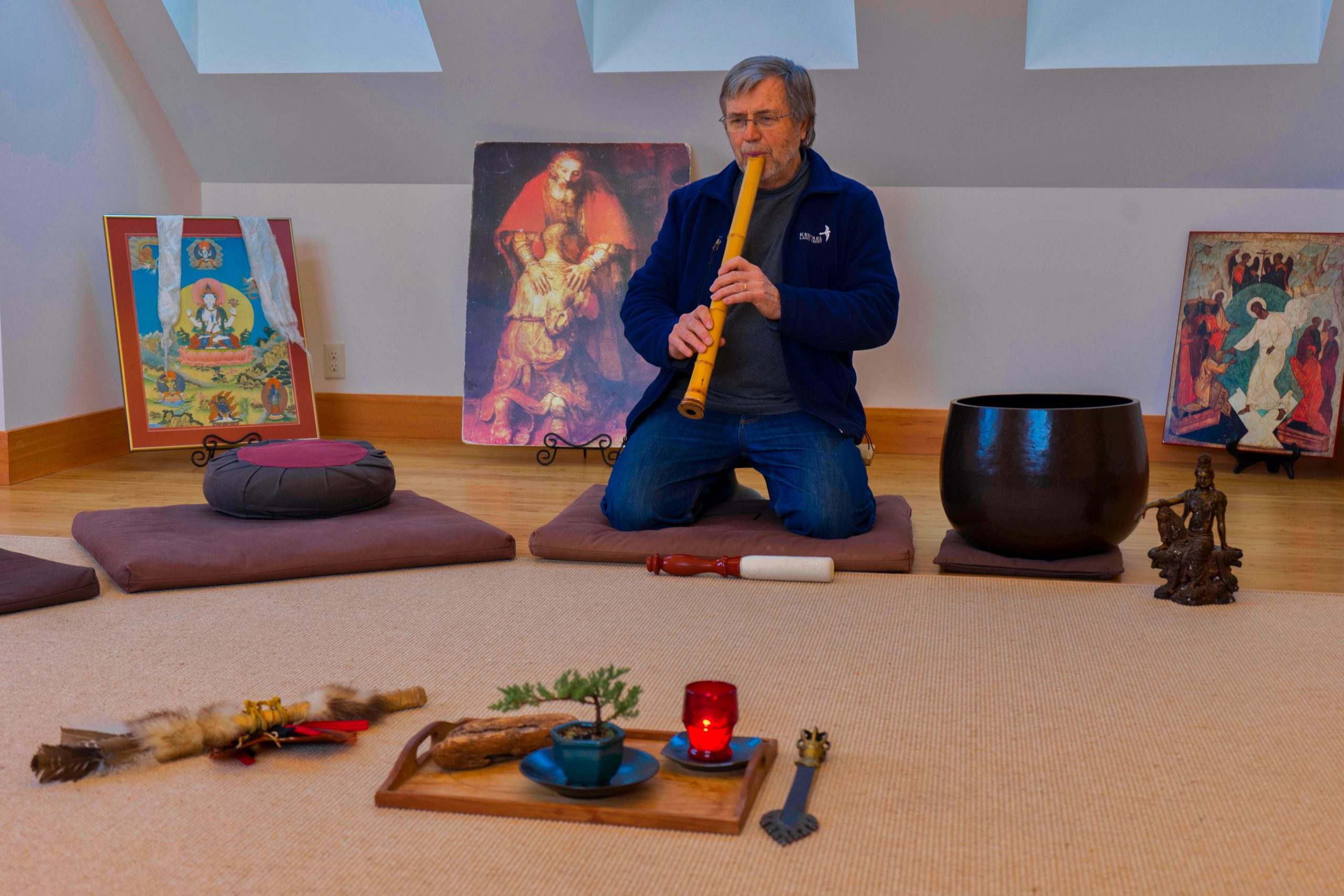
Robert A. Jonas, Ed.D. (Harvard University), M.T.S. (Weston Jesuit School of Theology), is the author of My Dear Far-Nearness: The Holy Trinity as Spiritual Practice (Orbis). He also the author of The Essential Henri Nouwen (Shambhala Publications), Henri Nouwen (Orbis), and Rebecca A Father’s Journey from Grief to Gratitude (Crossroad).
Dr. Jonas is founder and director of The Empty Bell, a contemplative sanctuary in Northampton, Massachusetts, whose website (emptybell.org) is an extraordinary resource for contemplative Christians and for Buddhist-Christian dialogue. Trained as a psychotherapist, Jonas is now a writer and retreat leader who speaks around the country on contemplative topics (both in person and online) and is a guest lecturer at Northwind Seminary. Jonas is also a video artist, musician, and environmental steward. A Christian in the Carmelite tradition, he has received spiritual formation with Buddhist teachers.
Jonas is a Board member of the Society for Buddhist-Christian Studies, a past Board member of the Henri Nouwen Society and a member of the Eckhart Society. He has served as Chair of the Board of the Kestrel Land Trust in Amherst, Massachusetts, and is an environmental activist in western Massachusetts.
As a student of Sui-Zen, the Japanese bamboo flute (shakuhachi), he has performed in many secular and spiritual contexts and has played shakuhachi at three Buddhist-Christian retreats with the Dalai Lama, including under the Bodhi Tree in India. His CDs include “Blowing Bamboo,” “New Life from Ruins,” and “Many Paths, One Joy.” “Blowing Bamboo” is available on iTunes, Spotify, Pandora and other platforms.
Jonas’s videography collection on YouTube includes offerings on spirituality, environmental activism, visual artistry, and music: youtube.com/user/honkyoku
Jonas is available to give presentations and lead retreats on such topics as the Holy Trinity, Christian mysticism, psychology and spiritual practice, and Buddhist-Christian dialogue. Contact him at rbtjonas@aol.com.
Other publications by Robert A. Jonas
- “The Empty Bell: A Contemplative Community”, a chapter in Handbook of Spirituality for Ministers: Perspectives for the 21st century, volume 2, ed. Robert J. Wicks (NY and Mahweh, NJ: Paulist Press, 2000), 486-506.
- “Daybreak,” a chapter in The Lay Contemplative: Testimonies, Perspectives, Resources, eds. Virginia Manss and Mary Frohlich, Foreword by Tilden Edwards (Cincinnati: St. Anthony Messenger Press, 2000), 37.
- “Loving Someone You Can’t See,” a chapter in Beside Still Waters: Jews, Christians, and the Way of the Buddha, eds. Harold Kasimow, John P. Keenan, and Linda Klepinger Keenan (Boston: Wisdom Publications, 2003), 143-156.
- “Cigarette Smoke and Incense,” a chapter in Into the Mountain Stream: Psychotherapy and Buddhist Experience, ed. Paul C. Cooper (Lanham, MD: Rowman & Littlefield, 2007), 109-126.
- Foreword (“Henri’s Way of Discernment”) & Appendix (“Spiritual Friendship and Mutual Discernment”) in Discernment: Reading the Signs of Daily Life, Michael Christensen and Rebecca Laird (San Francisco: HarperOne, 2013), xiii-xxi and 185-201.
The Empty Bell
Insert text about The Empty Bell here.
“One Love” by Noel Stookey, with Jonas on shakuhachi
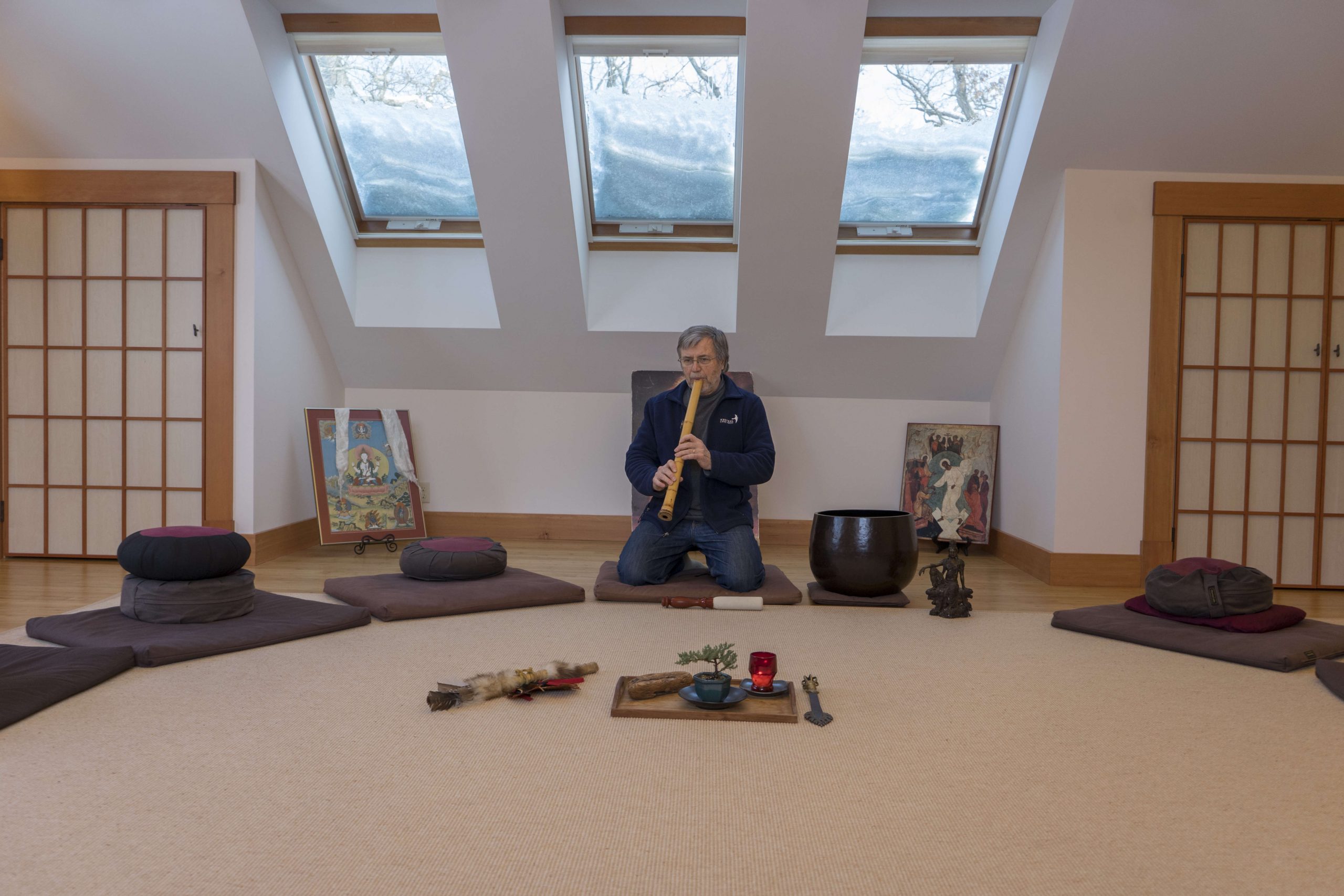
Videos
Below are some select videos from Robert Jonas’ YouTube Channel that are related to topics in the book:
In this interview, Dr. Jonas finds Henri’s vision of I-Thou relationship within the archetype of the Holy Trinity.